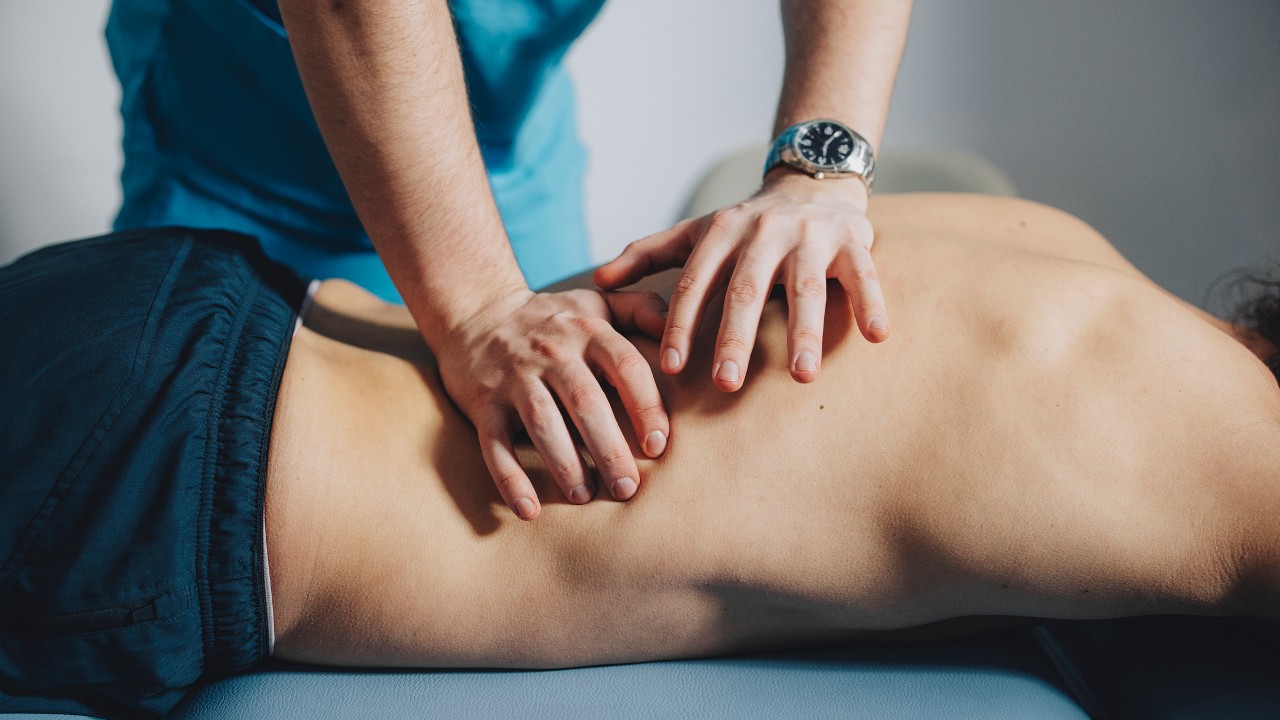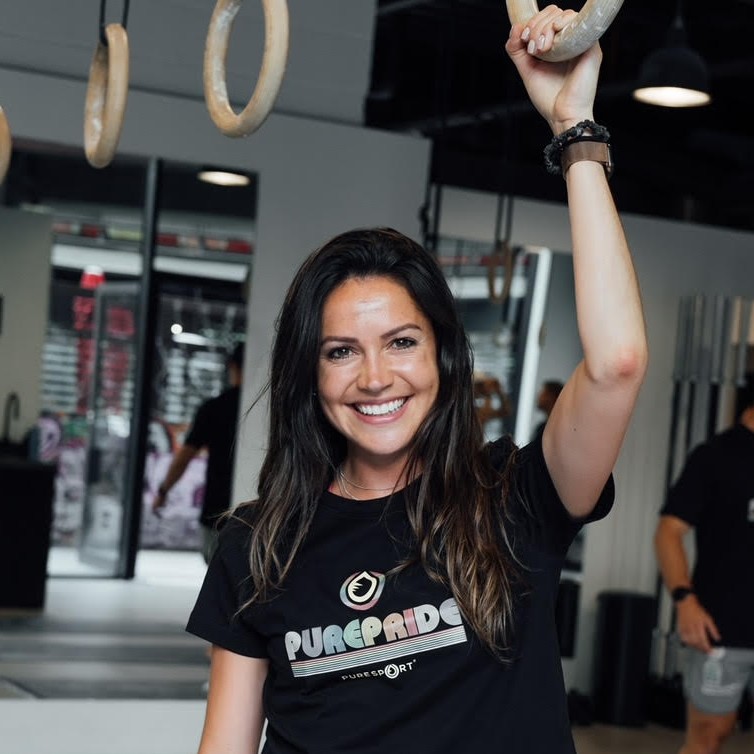The Best Ways To Treat Muscle Knots
Sort out painful muscle knots with these expert-approved suggestions

When you develop muscle knots, you know about it. Although they can develop anywhere in the body, they tend to occur in the back, glutes and legs, leaving you in a lot of pain and sometimes struggling to move properly. This can lead to poor sleep, low mood and imbalances in posture, which can contribute to other injuries developing.
There are DIY ways to get rid of muscle knots, from applying heat to using a massage gun on its gentlest setting, although seeing a professional will be the most effective solution. Plus, there are simple techniques that may prevent you from getting muscle knots in the first place.
We spoke to Tim Kayode, a performance therapist and co-founder of Myoset, about muscle knots to find out what they are and the easiest ways to get rid of them.
What are muscle knots?
“Muscle knots are dense and tender parts of a muscle that get tight and engage even while the muscle is rested,” says Kayode.
These can be painful when touched and, Kayode says, can also send referral pains to other parts of the body. For example, a muscle knot that forms in your upper back – a common area for muscle tension – could lead to pain in the glutes and/or lower back because of the network of nerves that runs through your body. Muscle knots can also cause other pain, such as headaches and toothaches.
Muscle knots can form in a variety of ways. “These include overtraining a muscle group, bad posture, a non-active or sedentary lifestyle, dehydration and even stress,” says Kayode.
It’s difficult to identify muscle knots correctly without seeing a healthcare professional, such as a physio, but they usually feel bumpy, dense and tender when you touch them. In some cases a knot can also be swollen.
“A good way to identify a knot is if, when you touch the affected area and you are relaxing the muscle, it still feels engaged and contracted,” says Kayode.
Can you prevent muscle knots?
Naturally, we want to do everything we can to prevent muscle knots, because they can be extremely painful.
“Ways to help prevent muscle knots include good hydration, a balanced diet, and appropriate rest and recovery after training,” says Kayode. This includes warming up and warming down after exercise. If you don’t have a go-to routine of your own, try this gym warm-up or this warm-up routine for runners, then finish with this stretching routine or a set of post-run stretches.
Aim to drink two to three litres of water a day, because hydration helps protect muscles and joints, plus it helps your kidneys flush out toxins. Kayode also says there are a few foods known to aid muscle repair, such as those high in protein, along with almonds, ginger, turmeric and blueberries.
Kayode adds that focusing on good posture is of great importance in helping to prevent muscle knots. “Good posture, especially when sitting, is vital, as the majority of knots form in the posterior chain, especially your back and trapezius muscles”. Our guide to desk posture will help make sure your set-up isn’t causing you problems unnecessarily.
Sign up for workout ideas, training advice, reviews of the latest gear and more.
If you’re sitting for long periods of time at a desk, aim to get up regularly and move around; perhaps throw in a few stretches to loosen up and avoid muscle tension. These exercises to relieve back pain are safe, simple and office-appropriate.
The Best Ways To Treat Muscle Knots
Luckily, there are ways to treat muscle knots and relieve the pain and discomfort.
Apply Heat
This is an effective way of reducing inflammation in muscles, which can then help to reduce pain. You can use a heat pad: these can be warmed in the microwave, though some emit heat as soon as they are applied to the skin.
A massage ointment that contains methyl salicylate, such as Deep Heat, can also work. These can cause a hot feeling when applied to the skin, which reduces pain in the muscles and boosts blood flow.
Stretching
“Moving the body around is great for circulation, which can speed up the healing process of muscle knots,” says Kayode, who recommends holding stretches for at least 30 seconds.
Not sure what stretches are best for you? Try this full-body stretching routine or these five stretching exercises.
Professional Massage
“Let the massage therapist know where the knot is and they will be able to work into the muscle and perform different ‘release’ techniques,” says Kayode.
These include trigger point massage and soft tissue release – both great for reducing the density of the knot. Kayode explains that a trigger point is a specific point in a muscle that causes pain which refers to different parts of the body.
“A trigger point in the trapezius muscle, for example, can cause headaches,” Kayode says. “Trigger point therapy is done by applying pressure to the specific area using your thumb for around 10 seconds. This can help to reduce headaches and muscle tension while also improving muscle flexibility.”
Soft tissue release is another type of massage, which a professional masseuse practises on a patient to improve their muscle flexibility.
Rest
If you’re experiencing muscle knots, try not to aggravate them. Avoid any exercise that causes the pain to worsen because you’re only going to make the muscle knots worse, making them harder to treat. Be sure to find a comfortable position in bed, too, and avoid placing pressure on your muscle knots.
Use A Massage Gun
There are many benefits of a massage gun, one of which is that they may help alleviate muscle knots as they begin to subside. Massage guns provide a type of percussive therapy, in that they go deep into the muscle using intense and rapid vibrations, breaking up tension in the muscle tissue. Kayode cautions that the gun shouldn’t be used on a high setting.
Regular use before muscle knots form should help reduce tension in the muscle and reduce inflammation – key causes of muscle knots.

Lucy is an experienced health and fitness journalist, and was formerly health editor for TI Media’s portfolio of women’s titles. Lucy qualified as a level 3 personal trainer with Train Fitness in 2016, and also holds qualifications in pre- and post-natal fitness, as well as in nutrition for exercise.
